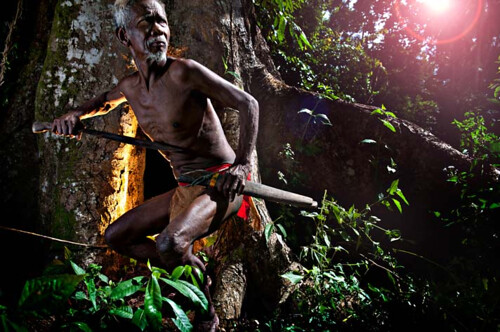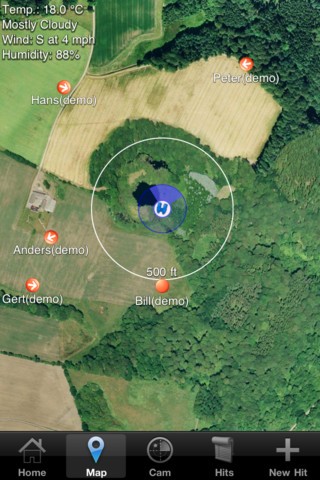Amazing Hunter-Gatherer Societies Still In Existence
May 27, 2011
by Alex Czartoryski
Before the agricultural revolution, human beings spent more time on this planet as hunter-gatherers, relying on nature’s resources and their own survival instincts to sustain themselves. The advent of farming changed all of that. With the increasing contact hunter-gathering societies had with farmers and herders, hunter-gatherer populations decreased in sweeping numbers throughout the course of history.
Some theorize that by the end of this century, the last hunting and gathering societies will vanish, taking with them an “irreplaceable link to our past”. Incredibly, here are some of the few tribes that have managed to maintain much of their independence as hunter-gatherers.
Kalahari Persistence Hunters
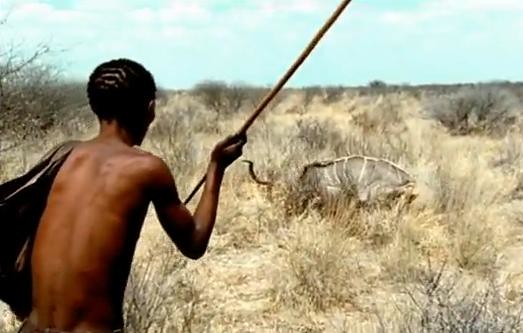
Kalahari bushmen of the Kalahari Desert of Africa use one of the oldest forms of hunting known to man, persistence hunting. Before guns, before knives, before weapons, we used our bodies to hunt. More specifically, we chased our prey until it collapsed. Nowadays, this method would probably not be recommended in a
hunter safety course. Kalahari hunters chase their prey (typically a kudu i.e. antelope) for 2 to 5 hours over 25 to 35 km in temperatures of about 40 to 42°C (104 to 107°F). Humans actually use much less energy to increase speed than most animal. Their sweat also helps keep the runners cool, whereas the animal must take a rest and find water, the ideal time for the Kalahari to go for the kill, spearing the beast at close range. Persistence hunting is thought to have been one of the earliest forms of human hunting, having evolved 2 million years ago.
Spinifex of the Great Victoria Desert
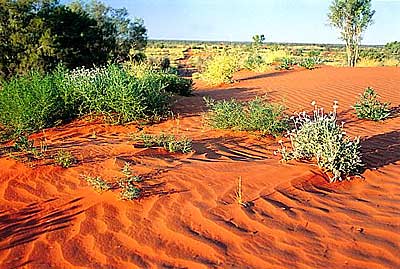
The Spinifex people or Pila Nguru (which translates to “home county in the flat between sandhills”) lead a traditional hunter-gatherer existence in the Great Victoria Desert, situated in Western Australian. Much of the information regarding this indigenous group has remained widely unknown before 1910-1930. This was around the time missionaries had begun invading their land.
Then in 1952, the British began testing the atomic bomb only 300 km away from their location. When the Brits realized people lived there, they sent an experienced bushman named Walter MacDougall to warn the Spinifex of the testing going on. Given he was one man in charge of spreading the word across a very vast land, MacDougall inevitably didn’t have the chance to warn everyone.
Most of the Spinifex were moved from their homelands to missions at Cundeelee and Warburton (about 65km east of Melbourne) but some still remained to continue the hunter-gatherer tradition.
It wouldn’t be until the year 2000 that the Spinifex people would become the second tribe to be accorded their Native Title land rights over a sector of land encompassing 55,000 km2.
Sentinelese of the Andaman Islands

Two Sentinelese islanders defending their land from the Coast Guard
The Sentinelese dwell on the Andaman Islands in the Bay of Bengal between India and the west of Burma. They are believed to be one of the last Stone Age tribes in the world to maintain their independent existence and are unruly about defending their territory. Incredibly they also managed to survive the 2004 Indian Ocean Tsunami. The Sentinelese are the only hunter-gatherers who resist complete contact with the outside world.
In 1974, when a film crew attempted to make friendly contact with the Sentinelese, leaving gifts of food and some pots and pans, one of the islanders shot the film director in the thigh with an arrow. A year later when tourists began nearing the area, they were repelled with Sentinelese arrows.
A 2004 Telegraph article reported how two drunken fisherman strayed on to their island and were promptly killed by the inhabitants.
Their bodies are still there: the coastguard helicopter that went to collect them was hauled off with a “shower of arrows” being fired from the Sentinelese. From the little we know about this people, those who have had the chance to observe their customs have reported that their main weaponry consists of javelins, and a flatbow and at least 3 varieties of arrows. One type for fishing, one for hunting, and one “untipped” one used for firing warning shots.
According to the 2001 Census of India, officials recorded only 39 individuals in the tribe (21 males and 18 females), though some counts have said it could be anywhere between 40-500. DNA analysis of another tribe, the Jarawa, whose members made first contact with the outside world in 1997, suggest that the tribesmen migrated from Africa around 60,000 years ago.
Pirahã of the Maici River in the Amazon
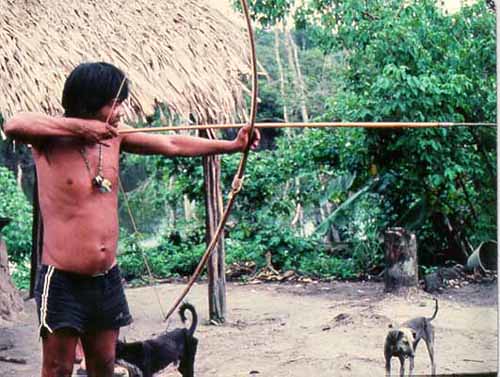
The Pirahã people are an indigenous Amazonian hunter-gatherer tribe who live mainly on the banks of Brazil’s Maici River. According to the Survival International Organization, Brazil’s Amazon is home to more uncontacted tribes than anywhere else in the world.
Anthropological linguist, Daniel Everett, is one of the leading experts on Amazonian languages who had the opportunity to live in the Pirahã village and study the tribe’s customs. He remarks on the Pirahã’s highly resourceful nature:
"The Pirahã are supremely gifted in all the ways necessary to insure ensure their continued survival in the jungle: they know the usefulness and location of all important plants in their area; they understand the behavior of local animals and how to catch and avoid them; and they can walk into the jungle naked, with no tools or weapons, and walk out three days later with baskets of fruit, nuts, and small game."
Though the Pirahã do have some contact with the outside world, it is minimal. They do barter with external traders but for the most part have resisted most outside influences (most notably, agriculture and farming) retaining a hunter-gatherer lifestyle. They do not store food but rather eat as they acquire it.
Interestingly, they also follow a segmented sleep pattern which conforms to historically natural sleeping patterns. They take shorts naps of 15 minutes to maximum two hours throughout the day and night, and rarely sleep through the night.
The Batak of Northern Palawan in Western Philippines
